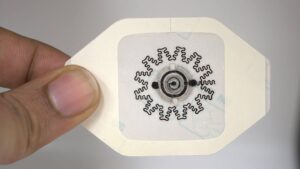ButSpeak.com
News which Matters.

Researchers at North Carolina State University have developed an inexpensive, water-powered electric bandage that accelerates the healing of chronic wounds by 30%, offering a promising new treatment option.
In a groundbreaking development that could revolutionize wound care, researchers at North Carolina State University have created a new type of electric bandage designed to accelerate the healing of chronic wounds. The innovative product, which might seem like something out of a science fiction movie, offers a promising solution for patients struggling with wounds that refuse to heal using conventional treatments.
Traditional adhesive bandages are simple yet effective tools that shield wounds from bacteria and other contaminants, ensuring that the body’s natural healing process is not interrupted. However, chronic wounds—such as those often found in patients with diabetes—pose a much greater challenge. These wounds are notorious for their slow healing or failure to heal at all, significantly increasing the risk of severe complications, including amputation and death.
The new electric bandage, developed by the team at North Carolina State University, provides a novel approach to this problem. The bandage is both inexpensive and easy to use, featuring a water-powered, electronics-free design that generates an electric field to promote healing. The dressing includes electrodes on one side and a small, biocompatible battery on the other. When applied to a wound, a drop of water is used to activate the battery, which in turn powers the electric field.
In animal studies, wounds treated with these electric bandages showed a remarkable 30% increase in healing speed compared to wounds treated with standard bandages. This faster healing process not only reduces the risk of complications but also provides a much-needed, cost-effective alternative to existing treatment options, which are often prohibitively expensive for many patients.
Chronic wounds are a significant concern for healthcare providers, especially for those treating patients with conditions like diabetes, where the wounds are not only slow to heal but also prone to recurring. The introduction of this new technology could represent a major step forward in wound care, offering patients a more affordable and effective means of recovery.
The team at North Carolina State University continues to explore ways to improve and refine this technology, with the hope that it will soon be available for widespread use in clinical settings. As the healthcare community looks for new solutions to manage chronic conditions, innovations like the electric bandage offer a glimpse into a future where even the most stubborn wounds can be healed with ease.